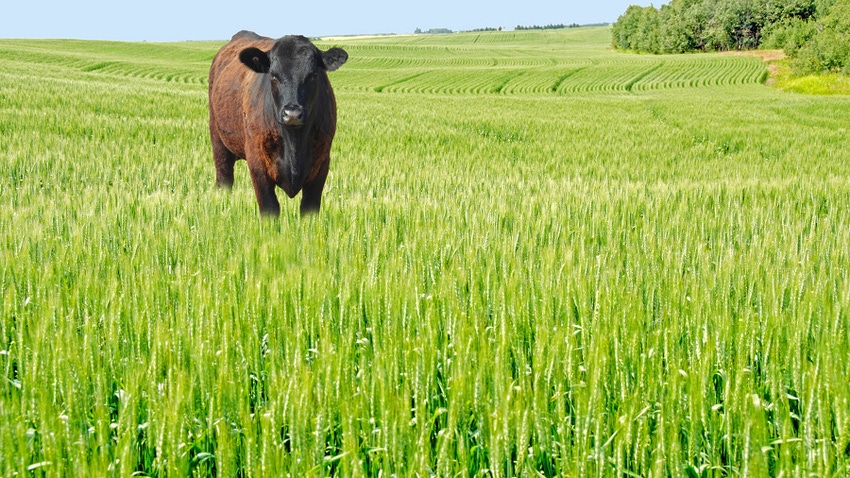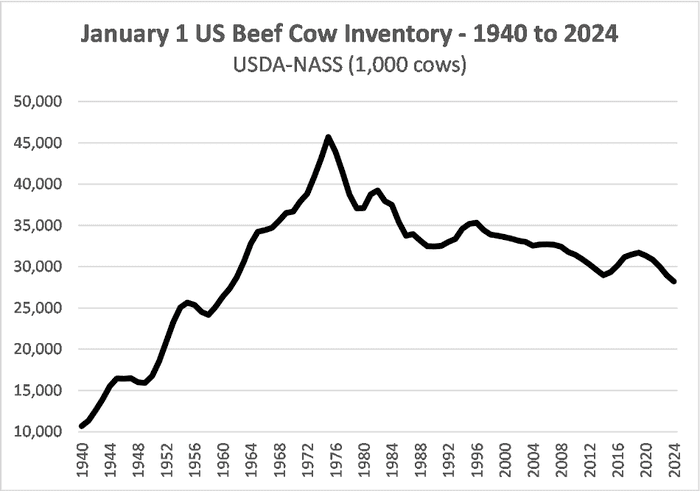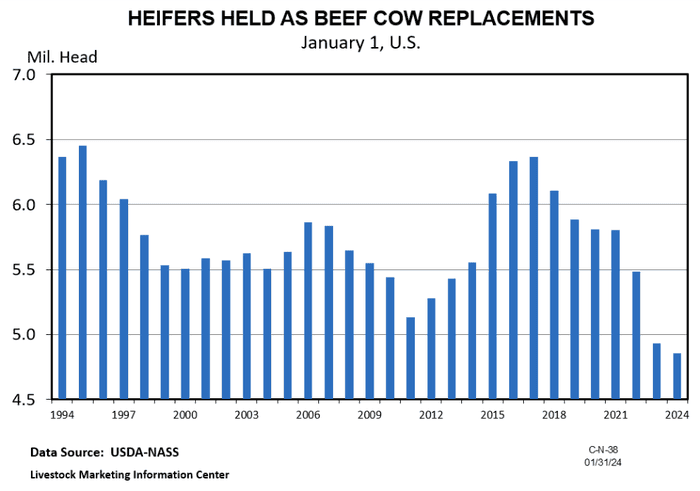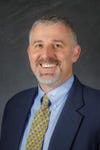February 22, 2024

USDA’s cattle inventory report confirmed that the US cowherd continued to get smaller during 2023. Higher input costs, regional weather challenges and hay supply issues, strong cull cow prices and several other factors have contributed to a prolonged liquidation phase of this cattle cycle. Despite the fact that calf prices were relatively strong during 2023, there is no indication that heifer retention has begun. It would appear that we are likely to see a “slow expansion” when beef cow numbers do start to grow in the coming years. At some point, the cattle market will be strong enough, and weather will be cooperative enough, that we will reverse this trend of decreasing cow numbers.

Occasionally someone will ask why we tend to expand the cowherd when prices are high. It would seem that the best time to expand would be when prices are low because females are worth less. It’s a good question and I understand why someone would ask it. On the surface it is true that the cost of breeding stock tends to be lower when calf prices are lower and the full cost of developing a heifer is lower when heifer calves are less valuable. But producers tend to expand during high priced times for two reasons. First, the high calf prices make them more interested in having a larger number of calves to sell in the future. And secondly, high price times often provide the ability to sell fewer calves and still meet financial obligations. By that I mean it is easier to sell fewer heifer calves when the steers and heifers you do sell are fetching a higher price.
I wanted to walk through this to set up the idea that the current interest rate environment is another factor making expansion less attractive to cow-calf producers. The expansion decision is really a tradeoff. A cow-calf producer choosing to expand makes a short-term investment (heifer retention or breeding stock purchase) in hopes of seeing higher profit levels in the future. Any time a short-term / long-term discussion is had, interest rates and inflation are likely to enter the conversation.
The first impact of high interest rates on expansion is the most obvious – the cost of financing breeding stock increases. A farmer wishing to purchase bred heifers in order to expand the number of cows he / she runs will pay more in interest over the length of that loan. The higher interest expense lowers the potential profitability on that bred heifer as she starts to produce calves in the future. A producer that expands through heifer retention is still impacted as that producer sells fewer heifers in the short run and incurs development costs on those heifers retained. Even if money is not borrowed directly for this purpose, the opportunity cost of the money not received by selling the heifer calves and the money spent on development is more significant in a higher interest rate environment.
The second impact is one that is not discussed as often, but I also feel that is very relevant – interest rates impact the time value of money. Money in the present is always preferred over money in the future and interest rates largely determine how significant that preference is. When a producer retains a heifer for replacement purposes, he / she forgoes her value as a calf (present) in order to see increased revenues from the sale of her calves after she enters the herd (future). The preference for money now, from the sale of the weaned heifer, is greater when interest rates are higher. At the same time, the real value of those future calves is lower due to higher interest rates. An economist might say those future returns are “more heavily discounted” in a higher interest rate environment. This combination results in less desire to hold heifers for development purposes and I think we are seeing some impact from this today.
I think weather (forage supply), calf prices, and production costs are the three main determinants of expansion. But we also can’t ignore the fact that we are in a very different interest rate environment in 2024 than we were during our last expansion phase. Interest rates have been another factor delaying expansion of the cowherd and should be watched as we consider when we will turn the corner on this cattle cycle.

About the Author(s)
You May Also Like






